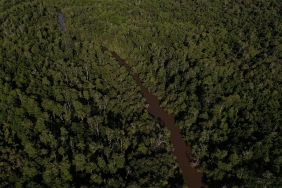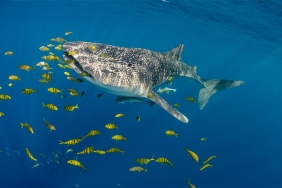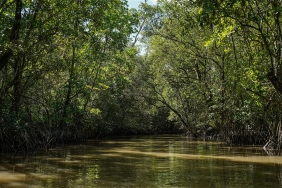TRAVELING TO PROTECT ANCIENT ANIMALS IN THE LAND OF PAPUA
By: Ronald Tethool (Ronny)
The big waves and cold air are the entertainment for WWF Indonesia staff at Jeen Womom Beach. They are tasked with guarding an ancient animal, the leatherback turtle on the beach in Tambrauw Regency, West Papua. Throughout the night, the turtle monitors walked 18 kilometers along the Jeen Jessa beach. They observe turtles that are about to lay their eggs.
At night, Hadi Ferdinandus, WWF Indonesia's Leatherback Turtle Conservation Coordinator in Abun, conducts monitoring to record the types of turtles that lay eggs. He also marked the nests with labels, giving pittagging for leatherback turtles and tagging for green, Olive Ridley and Hawksbill turtles.
Hadi explained, "After monitoring last night, this afternoon my friends and I will secure the marked nests from predators. Later we will also make predator traps and observe the threat of nest damage due to waves."
The leatherback sea turtle (Dermochelys coriacea) is an ancient sea turtle. It is the heaviest of the six sea turtle species, weighing between 300 and 400 kg. This turtle migrates very far. After laying their eggs on Jeen Womom beach, leatherback turtles travel to their feeding grounds in Monterey Bay, California, USA.
The leatherback turtle nesting beach area in Tambrauw Regency is known as Jeen Womom Coastal Park. This area consists of two beaches namely Jeen Jessa (formerly known as Jamursba Medi) and Jeen Syuab (formerly known as Warmon). Jeen Jessa Beach has a beach length of 18 km and Jeen Syuab Beach is 6 km long. The very long beach is a challenge for the monitoring officers to carry out their duties every day because they have to walk.
The turtle nesting season takes place in May-September at Jeen Jessa Beach and October-March at Jeen Syuab beach. Each year, a female leatherback turtle has an average of 3 nesting activities with the number of eggs ranging from 80-100 eggs per nest.
The number of nesting activities of female leatherback turtles is decreasing. This can be seen from the records of turtle monitors. During the five-year period from 2008 to 2012, there was a decrease in nesting activity from 6,000 nests to 2,000 nests. The average number of mothers is only 170 individuals.
The nests of these ancient animals are vulnerable to attacks from predators that target their eggs. Wild boars, wild dogs and monitor lizards are the main predators that destroy turtle nests. At certain times, large waves can cause damage to nests, especially leatherback turtle nests which always nest between the waterline and beach vegetation.
The highest number of causes of leatherback turtle nest damage at Jeen Jessa beach is predatory attacks by wild boars and dogs. Nest damage is around 10% of the total number of nests in each season. At Jeen Syuab Beach, the highest damage to nests is caused by waves during high tide. The figure is around 7 percent of the total number of nests each season.
Monitors record turtles at night, secure nests, control predator populations and remove nests that are in danger of being blown away and submerged by waves every day during the nesting season. Cold air, pitch black conditions at night, scorching sun during the day, rain, poisonous snakes, hunger are the 'entertainment' for sea turtle monitors at Jeen Womom Beach. However, the monitors continue to monitor and secure the nests because this is very important to avoid the extinction of one of the remaining ancient animals, the leatherback turtle.





